Railroad and Ferry Terminuses at Cape Charles Harbor
Introduction
Author-Uploaded Audio
00:00 / 00:00
Railroad and Ferry Terminuses read by Mr. Alvy Powell
Text-to-speech Audio
Only a few scattered railroad cars and segmented remains survive of a once expansive railyard. It is easy to miss why Mason Avenue became Cape Charles’ focal point from the late nineteenth to early twentieth century. When the New York, Philadelphia, & Norfolk Railroad (NYP&N) built a terminus here in 1884, business rolled into Cape Charles, creating a nearby “main street” to serve as a commercial hub. At its prime, the land across from Mason Avenue housed terminuses for both the railroad and the ferry, annually transporting over two million passengers. These transportation industries and, in turn, Cape Charles prospered very quickly, drawing people to live and work in the rapidly growing town. Countless longtime and former African American residents of Cape Charles have a relative who worked for the railroad or the ferry. Positions with the NYP&N Railroad and the Virginia Ferry Corporation’s Little Creek-Cape Charles Ferry provided higher paid positions for African Americans than other employment outside of the household or the fields. Many African Americans moved to Cape Charles for the sole purpose of working in these industries. Segregation limited employment opportunities for African Americans, but the railroad and ferry industries provided a means to support families and build lives in Cape Charles.
Images
Cape Charles' harbor, where both the railroad and ferry terminuses once dominated, is a calm and empty site in June 2022. (Allison Blakeman)
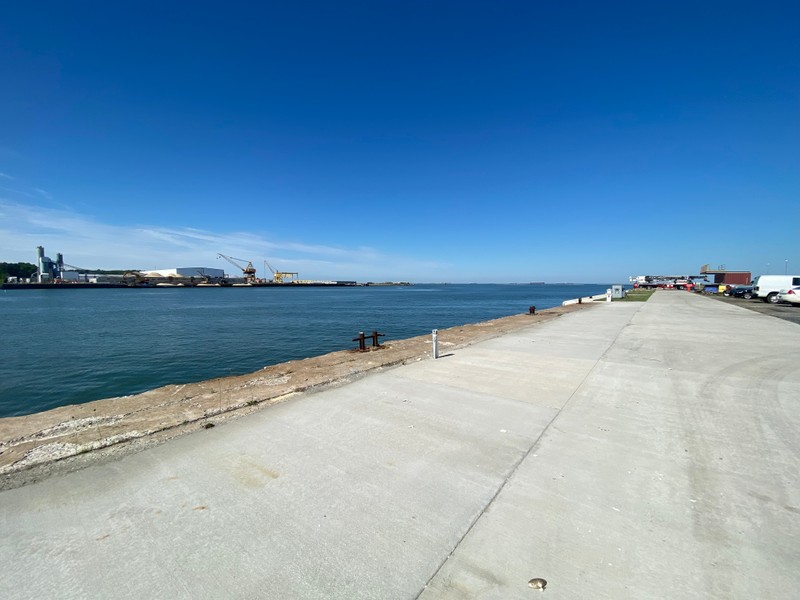
While the railroad and ferry terminuses no longer stand, Mason Avenue again thrives as it once did. (Allison Blakeman)
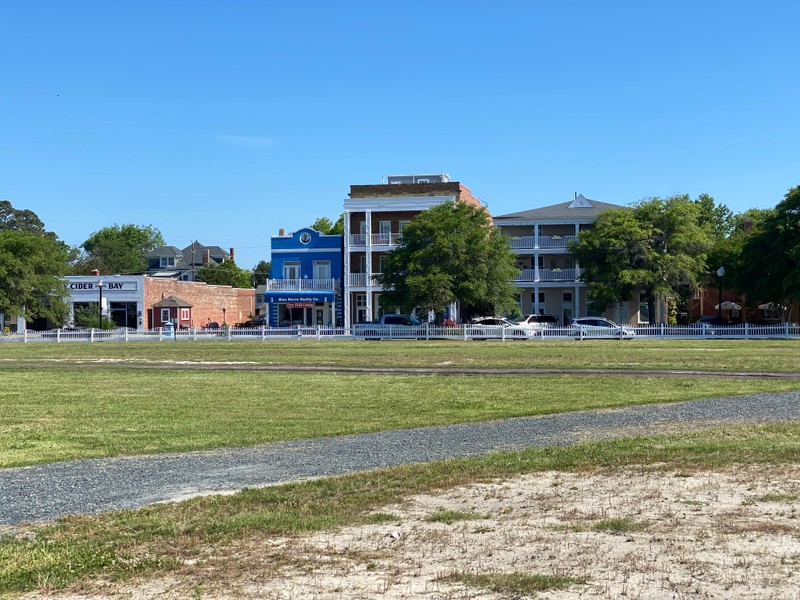
The Cape Charles ferry terminus is pictured on the (viewers') left, while the railroad terminus is pictured on the (viewers') right. (Cape Charles Museum and Welcome Center)
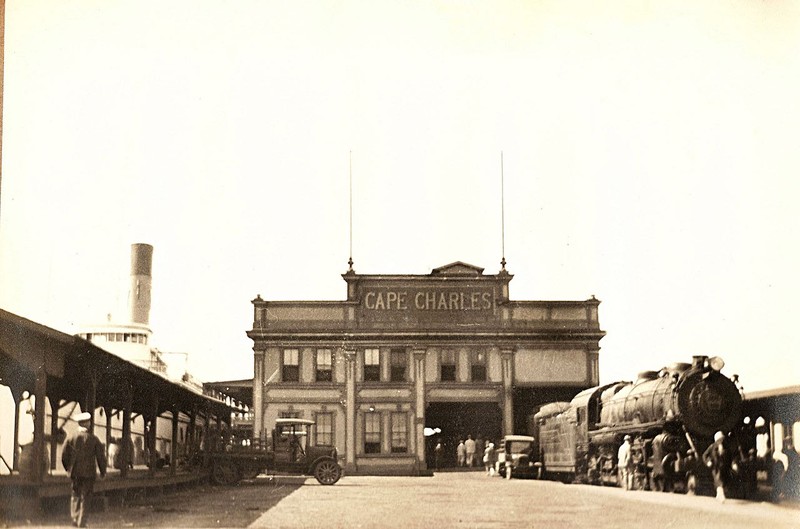
J. H. Smith, a cook on the tug, is pictured holding up a frying pan. (Cape Charles Museum and Welcome Center)
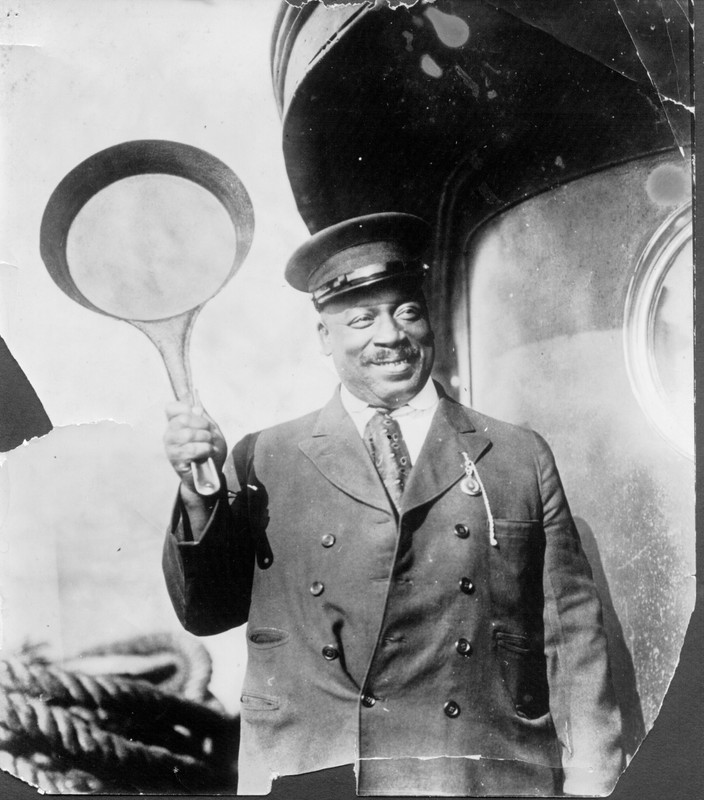
Chef E. J. Parker of Cafe Car 1106 makes one of his famous pies. (Cape Charles Museum and Welcome Center)
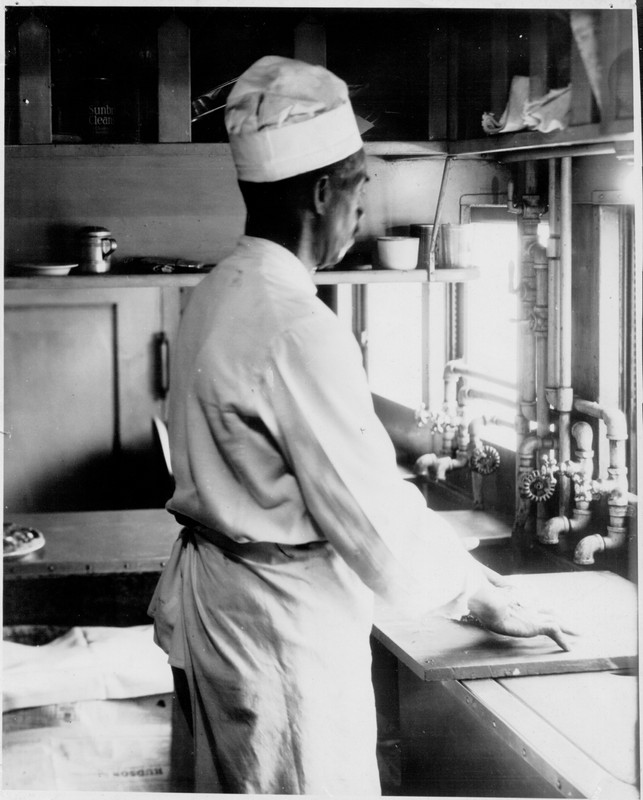
African American waiters are pictured in the dining room of the Elisha Lee ferry boat. (Cape Charles Museum and Welcome Center)
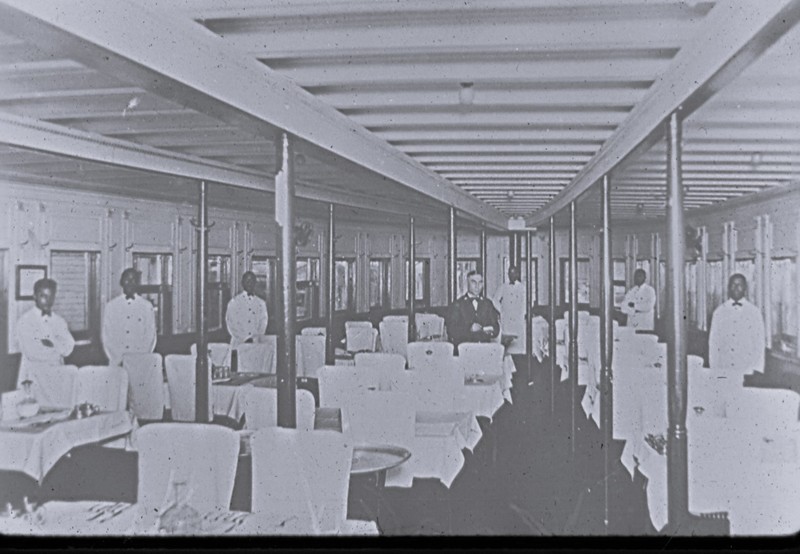
Segregation practices were not confined to land- pictured (viewers') top right, the phrase "WHITE WOMEN". (Cape Charles Museum and Welcome Center)
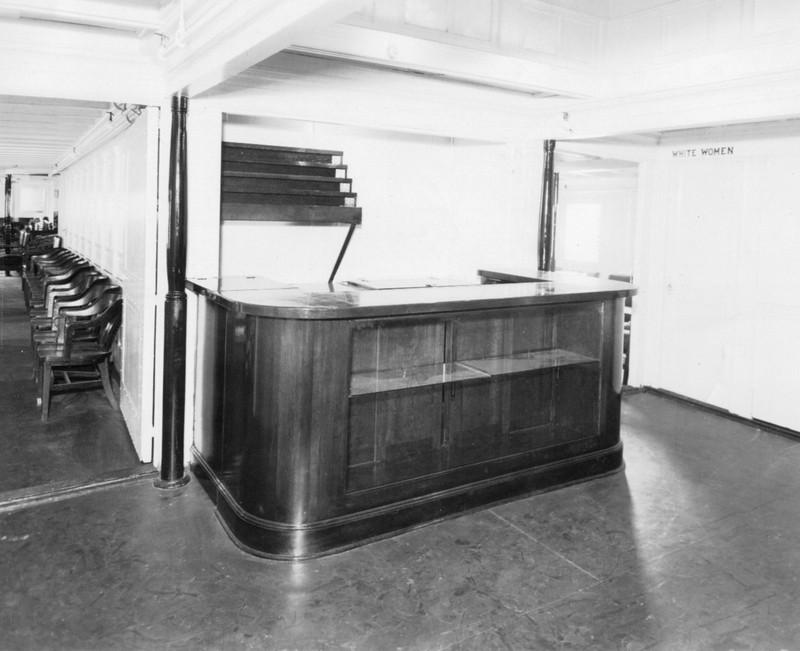
African American women enjoy a leisurely ride on a steamer. (Cape Charles Museum and Welcome Center)
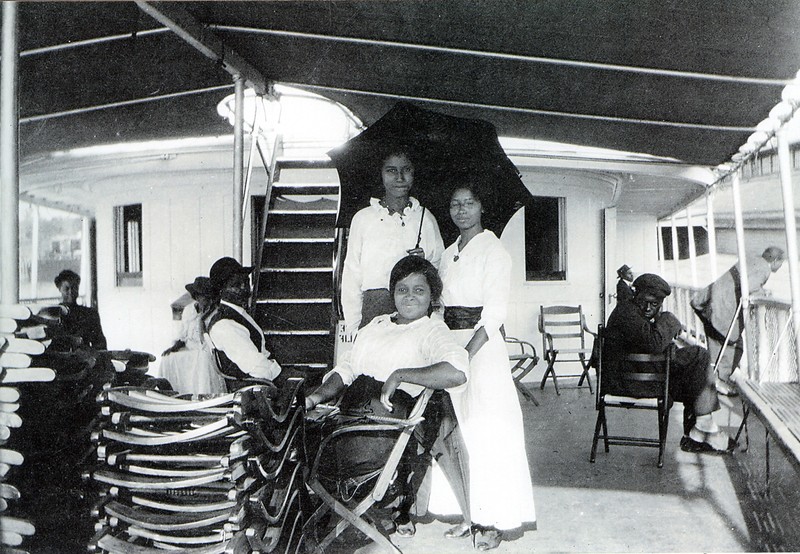
Backstory and Context
Text-to-speech Audio
In 1884, the NYP&N Railroad advertised to workers of all skill levels. The company sought "surveyors, engineers, teamsters, trackman, laborers, all needed," to build the track and terminus that created the prosperous "Railroad Town" of Cape Charles, Virginia.[1] African American men were included in the call for "all needed," and many came seeking new opportunities.[2] They worked as crossing guards, engineers, housekeepers, general laborers, porters, and track layers for the railroad, steamers, and ferries. African Americans were essential in building the railroad and Cape Charles, though their contributions largely remain absent from the historical narrative.
African Americans continued to provide essential services on the steamers and ferries that brought passengers, and later, automobiles across the Chesapeake Bay. Workers on the ferries had two days on and two days off. In addition to wages, ferry workers were able to bring home cooked, unused food to their families. Some members of the African American community employed by the ferry, though nowhere near an exhaustive list, were Purley Otha Press, Ire Bailey, Cavanaugh Clemmons Fox, Cal Stevens, Ernie Shears, Frank Sterling, Ed Turner, Robert Linsey, George Seaton, Reginald Collins, David Mitchell, and John Collins.
While the railroad, steamers, and ferries hired African Americans, they were primarily employed for unskilled labor positions, compared to the higher-ranking, higher paid positions offered to white men. Even in identical labor positions, African Americans received significantly lower wages. In 1949, the Virginia Ferry Corporation paid an African American shore laborer 65 cents per hour compared to a white shore laborer's 80 cents per hour- a deficit of 15 cents taken out of African Americans' wages due to discrimination.[3]
Though African Americans were recruited to work in Cape Charles' transportation businesses, they were not always afforded the same rights and treatment as patrons. The steamers used by the Pennsylvania Railroad appeared similar to the ones up North. However, as pointed out in the Journal and Guide, "In one respect it differs."[4] The difference was two separate cabins, a front one for African American passengers and a back one for white riders, both marked to leave no room for confusion. In the early years of the passenger ferries, African American families could not eat in the dining areas but could alternatively sit in the waiting areas or remain in their vehicles. African American residents of Cape Charles learned from childhood not to question racial segregation. Odelle Collins, a resident of Cape Charles for nearly 40 years recalls how word of segregated places or activities "would just spread around town."[5] She continues, "We didn't question it or anything like that. We just accepted it."[6] Times and attitudes have certainly changed. Back in her youth, she explains, "There was no protesting when we came along. [We] accepted what was there [...] That was it."[7] She elaborates, "It's a lot[different] now because, you know, the young people just don't accept what's going on. So they protest."[8]
With the ferry's move to Kiptopeke and the Chesapeake Bay Bridge-Tunnel's (CBBT) completion in 1964, the ferry and railroad industries once so integral to Cape Charles' existence vanished. This exodus of major employers, especially of African American workers, marked the economic downturn of the town. Although Mason Avenue once again thrives from new businesses and tourists, those who helped build the town and their descendants are disappearing. First relegated to the "Backstreet" area in a separate, segregated community principally contained between Washington and Jefferson Avenues, many African American residents have since been driven from their homes by the loss of these major employers, rising costs of living, and new efforts of "revitalization," which has raised property taxes and priced families out of their established homes. As Thomas "Tom" George Godwin, longtime resident and owner of Gray's Funeral Home, recounts, African American businesses and workers built up Cape Charles during its golden era, but this history is in great danger of being forgotten due to the disappearance of most African American-owned businesses and out-migration of African American residents. Tom stresses, "Now that Cape Charles is having its renaissance, I am observing the same phenomenon, of how the Colored in Cape Charles are being overlooked in the recalling of its history."[9]
Cite This Entry
Invisible History of African Americans in Cape Charles - Cape Charles Rotary and The Invisible History of African Americans in Cape Charles, Virginia . "Railroad and Ferry Terminuses at Cape Charles Harbor." Clio: Your Guide to History. May 19, 2023. Accessed March 14, 2025. https://theclio.com/tour/2388/1
Sources
[1] NYP&N Railroad Advertisement, Cape Charles Museum Collection, 1884.
[2] NYP&N Railroad Advertisement.
[3] “’Strike or No Strike’,” Eastern Shore Herald, March 12, 1949, 1. Accessed via the Virginia Chronicle webpages hosted by the University of Virginia. The webpages can be reached at: www.virginiachronicle.com.
[4] “Views of Races,” Journal and Guide, January 6, 1934, 6.
[5] Odelle Johnson Collins interviewed by Fiameta “Metty” Vargas Pellicer (July 27, 2021), Oral History Interview for the Cape Charles Rotary Club Invisible History Project.
[6] Odelle Johnson Collins, Cape Charles Rotary Club Invisible History Project.
[7] Odelle Johnson Collins, Cape Charles Rotary Club Invisible History Project.
[8] Odelle Johnson Collins, Cape Charles Rotary Club Invisible History Project.
[9] Metty Vargas Pellicer, Invisible History: Growing Up Colored in Cape Charles, Virginia: Memoir by Tom Godwin (St. Petersburg, FL: BookLocker, 2020), 8.
Allison Blakeman, June 2022
Allison Blakeman, June 2022
Cape Charles Museum and Welcome Center; 3600
Cape Charles Museum and Welcome Center; 317
Cape Charles Museum and Welcome Center; 328
Cape Charles Museum and Welcome Center
Cape Charles Museum and Welcome Center; 243
Cape Charles Museum and Welcome Center; 2965k On the steamer1
